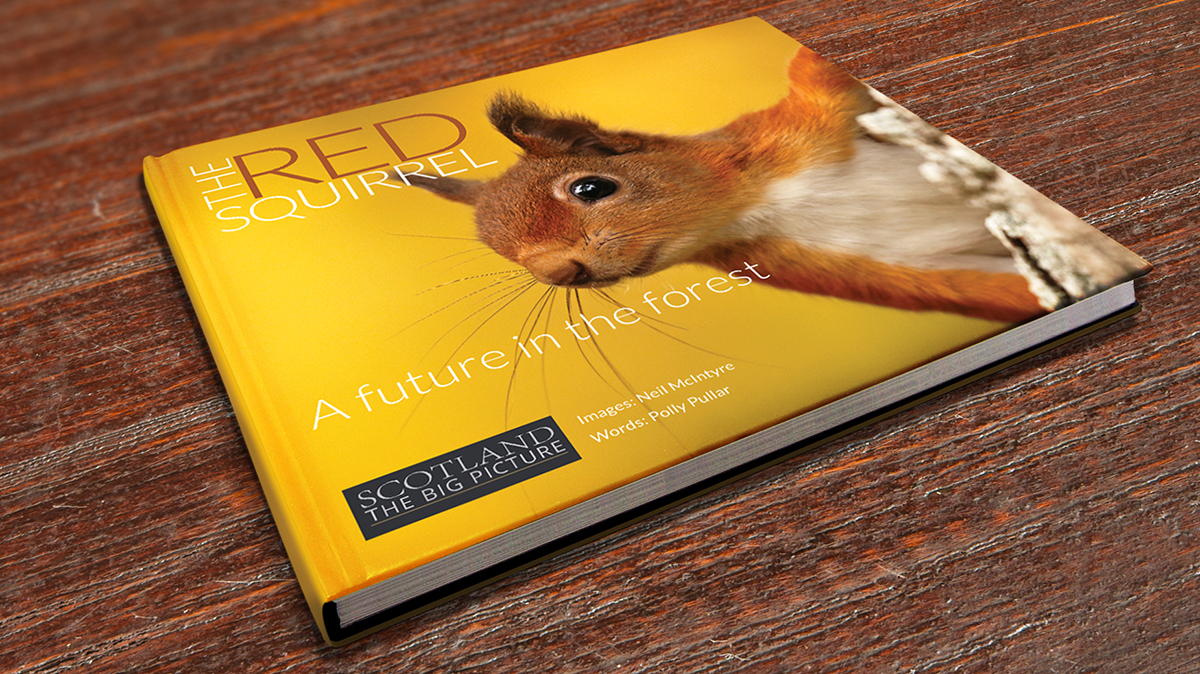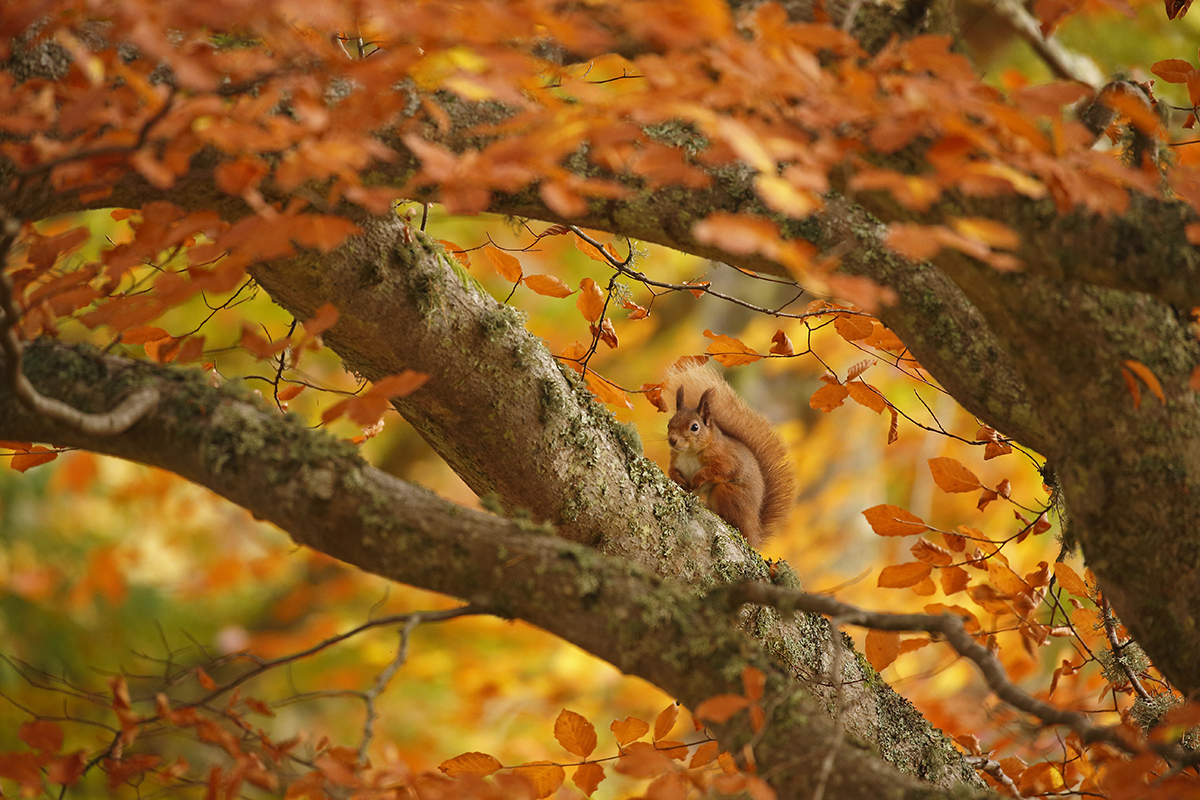
This is a beautiful book with fantastic images. Most of the photos are by Neil McIntyre (with a few from James Shooter, Peter Cairns and Jackie Walker).
Seen one Red Squirrel, seen them all? No! Despite this book having scores of Red Squirrel images the species is so photogenic and the images are so crisp that one never goes ‘Oh, another squirrel photo’. This is partly because Red Squirrels really are gorgeous – and people like me hardly ever see them in the wild – but also because the variety of images is wide. This book has Red Squirrels looking cute, of course, how could one avoid that, but there are many photos of Red Squirrels in their habitats and of the other wildlife of those habitats, and of the pinewoods and mountains of Scotland themselves. There isn’t, to my eye, a duff photo in the book. As you turn each page another delight or two appears.
So, it’s pretty, but what about the words (which are by Polly Pullar)? They are excellent too. This is a celebration of one species but a celebration of it in the context of the history and future of the pinewoods it inhabits. These are magical places with plants like the Twinflower, mammals like the Red Squirrel’s predator, the Pine Marten, insects like wood ants and birds such as the Crested Tit. And all are encountered in forests covered in lichens and mosses, with the hills and mountains nearby and free-flowing rivers cutting through the valleys. This is the big picture.
The book got me thinking of how we value nature and as I turned the page there was this quote from David Thoreau ‘If a man walks in the woods for love of them half of each day, he is in danger of being regarded as a loafer. But if he spends his days as a speculator, shearing off those woods and making the earth bald before her time, he is deemed an industrious and enterprising citizen.‘.
The Red Squirrel: a future in the forest by Neil McIntyre and Polly Pullar is published by Scotland Big Picture and is available from them directly.

Remarkable Birds by Mark Avery is published by Thames and Hudson – for reviews see here.
Inglorious: conflict in the uplands by Mark Avery is published by Bloomsbury – for reviews see here.
Behind the Binoculars: interviews with acclaimed birdwatchers by Mark Avery and Keith Betton is published by Pelagic – here’s a review and it’s now out in paperback.
[registration_form]
With the Government now spending £1million on work to make Grey Squirrel infertile [and can be used on Wild Boar, Deer, [[HUMANS}} etc] it seems the wrong time to bring yet another book out on ‘tree rats’. We know that both Goshawk and Pine Marten will do the work for nothing but our land owners will not allow it to happen killing the Goshawk on the way and stopping the reintroduction of the Pine Marten when needed. Why should the public ‘pay out’ yet again for the ‘Barons’ while the peasants are given mis information about nature to make it seem all worth while!
Jon – what an odd comment.
We have one of Neil’s crested tit photos framed from a Scottish holiday years ago.
I’m pretty sure Neil is the son of a gamekeeper, and runs a business doing wildlife photography classes. I think a daughter of another gamekeeper became an ecological consultant. People literally close to nature moving towards ‘new ways’ of their own accord? I see glimmers of hope in that, quite a few actually, we just need to speed the process up.
Mark has talked about how quickly we forget the past – I can’t remember what the verges were like as I cycled to birdwatch in my teens, but I suspect they were a good deal richer than now.
Red Squirrels have to be an extreme example – they’re a species of conifer forest, especially native pine in Scotland, aren’t they ? Well, actually not – once they were all through our ancient woods in England. Today about the only place you can see them in what was a familiar habitat is on the Grey (and deer) free Isle of Wight – at the northern end of Parkhurst forest (the southern half is conifer plated on heathland soils) is old Oak over hazel coppice – with red squirrels.
Just how quickly do things change ? In 1985 the last application for a license to kill red squirrels to protect timber trees landed on my desk in Forestry Commission HQ in Edinburgh – we turned it down. I’d just left Thetford in east Anglia where an annual census still found the odd red squirrel – and with PTES a trial for breeding for reintroduction was underway. Noone had any real inkling of how fast the carpet was rolling up on the reds.
Roderick – excellent points.
Well done Roderick….and lest we forget the “good old days”[?]…here’s a reminder..
http://www.highland-news.co.uk/Home/Reds-had-to-battle-after-bounty-hunt-6370043.htm
We used to knock hell out of that notorious pest, the black grouse too…